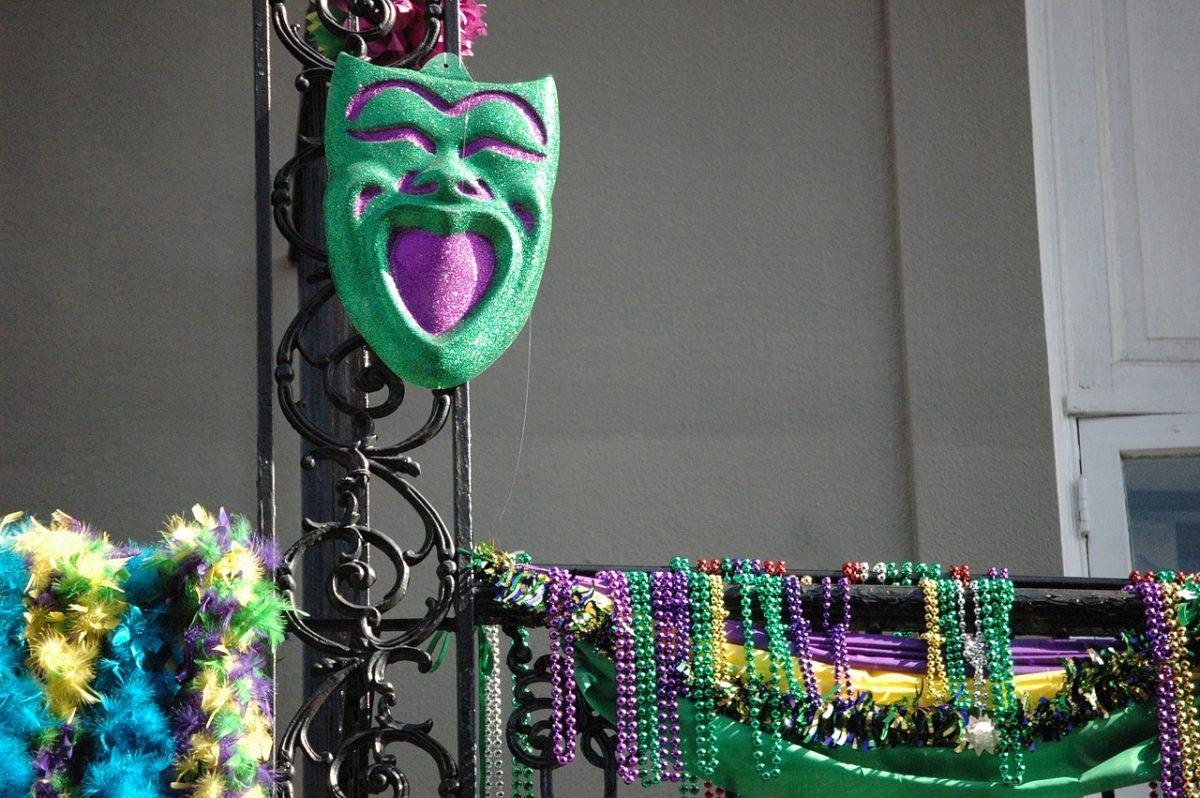Four Mardi Gras celebrations, four king cakes, four hours of history and four years of high school French class.
That’s how I learned about the French celebration of Mardi Gras. The beads, the lavish parades and outfits, the decorated masks and exquisite colorful displays.
It is a French tradition that was first brought to America in 1699 by French explorers who settled near present-day New Orleans.
In high school I took French every year and you would think that I would be fluent, but sadly I am not. During those four years though, I learned and celebrated Mardi Gras, during which my teacher would decorate the classroom in purple and green streamers with pictures of masks on the walls and music playing through those sad, barely-audible projector speakers.
Each person had a set of beads laying on their desks, each a different color with a different meaning. Purple beads represent justice, green symbolize faith and gold illustrates power. Each of these symbols give off good luck and a feeling of joy towards someone’s life. They are thought of as something people aspire to have in their life.
Mardi Gras is French for “Fat Tuesday” and it’s the last day of the carnival season, where everyone celebrates before Ash Wednesday, the first day of Lent. During this celebration it is common for people to indulge in delicious foods such as lavish dishes like shrimp étouffée, Jambalaya and crawfish.
It is the celebration of the last night to eat unhealthy and indulge in beloved foods before the Christian fasting of Lent, the religious act of giving up something in order to better yourself before Easter.

Every year during my French class’ celebration of Mardi Gras, my teacher would bring in a king cake, which is basically a ring of twisted cinnamon roll-style dough that is decorated in green, purple and gold icing or sugar. It has a flaky taste, more like eating plain dough than an actual cake, but inside these cakes is a little plastic baby. It is approximately three inches big and can be replaced with either beans or a small trinket.
I know that sounds weird; a plastic baby inside a cake? But yes, that is the tradition.
There are many theories as to why it is tradition to put a plastic baby inside the cake. There is belief that the baby is a symbol for baby Jesus, because it emphasizes how Jesus had shown himself to the three wise men, especially because of its close proximity and relations to the beginning of Lent. On the other hand, others believe that the one who finds the baby in their cake gets to be the king or queen of the festive celebrations during Mardi Gras, a symbol of good luck to those who find the trinket.
During my four years of Mardi Gras celebrations I have yet to be blessed with finding the baby inside the king cake, but maybe this year will be different.
For comments/questions about this story, email [email protected] or tweet @TheWhitOnline.
























































































































































!["Working with [Dr. Lynch] is always a learning experience for me. She is a treasure,” said Thomas. - Staff Writer / Kacie Scibilia](https://thewhitonline.com/wp-content/uploads/2025/04/choir-1-1200x694.jpg)










































